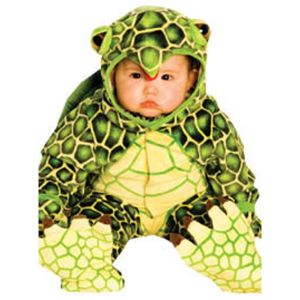We got two kittens from a rescue shelter. The 4-year-old and the 38-year-old are both enjoying the frantics of kittens. Even me.
And it allowed me to continue the discussion with Sorenne about bacteria and germs, and why sucking on her foot isn’t a great idea, and how kitties  clean themselves.
clean themselves.
But there will be no reptiles in this house, except for the occasional small skink that enters by accident.
Parents and schools see cute pets; I see Salmonella factories.
Scott Weese of the University of Guelph chimes in with his recent Worms and Germs blog post, excerpts below:
Reptiles can be good pets in some situations. The key is understanding and accepting the risk. That involves understanding the risks associated with reptiles, understanding types of households where the risk is high and knowing what to do to reduce the risk.
Denial isn’t an effective infection control measure.
An interview in Oregon Live with the founder of International Reptile Rescue highlights this issue.
“And while reptiles have been associated with spreading salmonella (the CDC reports about 70,000 such cases a year) people are more likely to  contract it from a dog, Hart says”
contract it from a dog, Hart says”
Uh…no. Reptiles are clearly high risk when it comes to Salmonella. Reptile contact has been clearly and repeatedly shown to be a risk factor for human salmonellosis. Dogs and cats (and various other animals) are potential sources of salmonellosis but while many more people have contact with dogs and cats, reptile contact is much more likely to result in Salmonella transmission. It only makes sense. Reptiles are at very high risk for shedding the bacterium. Dogs and cats rarely do (especially when they’re not fed raw meat).
“She’s never seen a case in the 30-plus years she’s been working with reptiles.”
Ok. So, since I’ve never actually seen influenza virus, I’ll never get the flu?
I know a lot of infectious disease physicians that have different experiences. In fact, it’s rare for me to talk to an infectious diseases physician without them providing details of various reptile-associated salmonellosis cases.
Talking about the risk of Salmonella shouldn’t be taken as insulting or a threat to reptile enthusiasts. People should accept that the risk is present and try to minimize it. The article actually has some of that useful information. “Just use common sense – wash hands thoroughly after handling the animal or its cage. A good rule of thumb is to keep hand sanitizer nearby. While  children under age 5 should avoid any contact with reptiles, Hart doesn’t advise snakes for children under age 7 or 8 for fear they could unwittingly harm the creature.”
children under age 5 should avoid any contact with reptiles, Hart doesn’t advise snakes for children under age 7 or 8 for fear they could unwittingly harm the creature.”
Reducing the risk is common sense…keeping reptiles out of high risk environments and using basic hygiene and infection control practices.
However, any semblance of common sense goes out the door when a rescue like this offers programs where you can pay them to bring reptiles to daycares, pre-schools and schools. So much for young kids avoiding contact with reptiles.
Reptiles aren’t bad, they’re just bad in certain situations. Common sense needs to be more common.
 We quantified and examined trends in reptile-associated salmonellosis in the Netherlands during a 30-year period, from 1985 to 2014. Using source attribution analysis, we estimated that 2% (95% confidence interval: 1.3–2.8) of all sporadic/domestic human salmonellosis cases reported in the Netherlands during the study period (n = 63,718) originated from reptiles.
We quantified and examined trends in reptile-associated salmonellosis in the Netherlands during a 30-year period, from 1985 to 2014. Using source attribution analysis, we estimated that 2% (95% confidence interval: 1.3–2.8) of all sporadic/domestic human salmonellosis cases reported in the Netherlands during the study period (n = 63,718) originated from reptiles.






 the likely culprits that passed on the bacteria.
the likely culprits that passed on the bacteria. Administration has banned the sale of these turtles since 1975.
Administration has banned the sale of these turtles since 1975..jpg) that between nine and 19 cases of rubislaw had been detected in Australians between 2000 and 2009.
that between nine and 19 cases of rubislaw had been detected in Australians between 2000 and 2009. that can lead to illness. Washing hands after touching them is very important.
that can lead to illness. Washing hands after touching them is very important. are to include recommendations for preventing the transmission of salmonella. The proposed changes, according to the department, allow for consistency with the Centers for Disease Control and Prevention recommendations.
are to include recommendations for preventing the transmission of salmonella. The proposed changes, according to the department, allow for consistency with the Centers for Disease Control and Prevention recommendations.